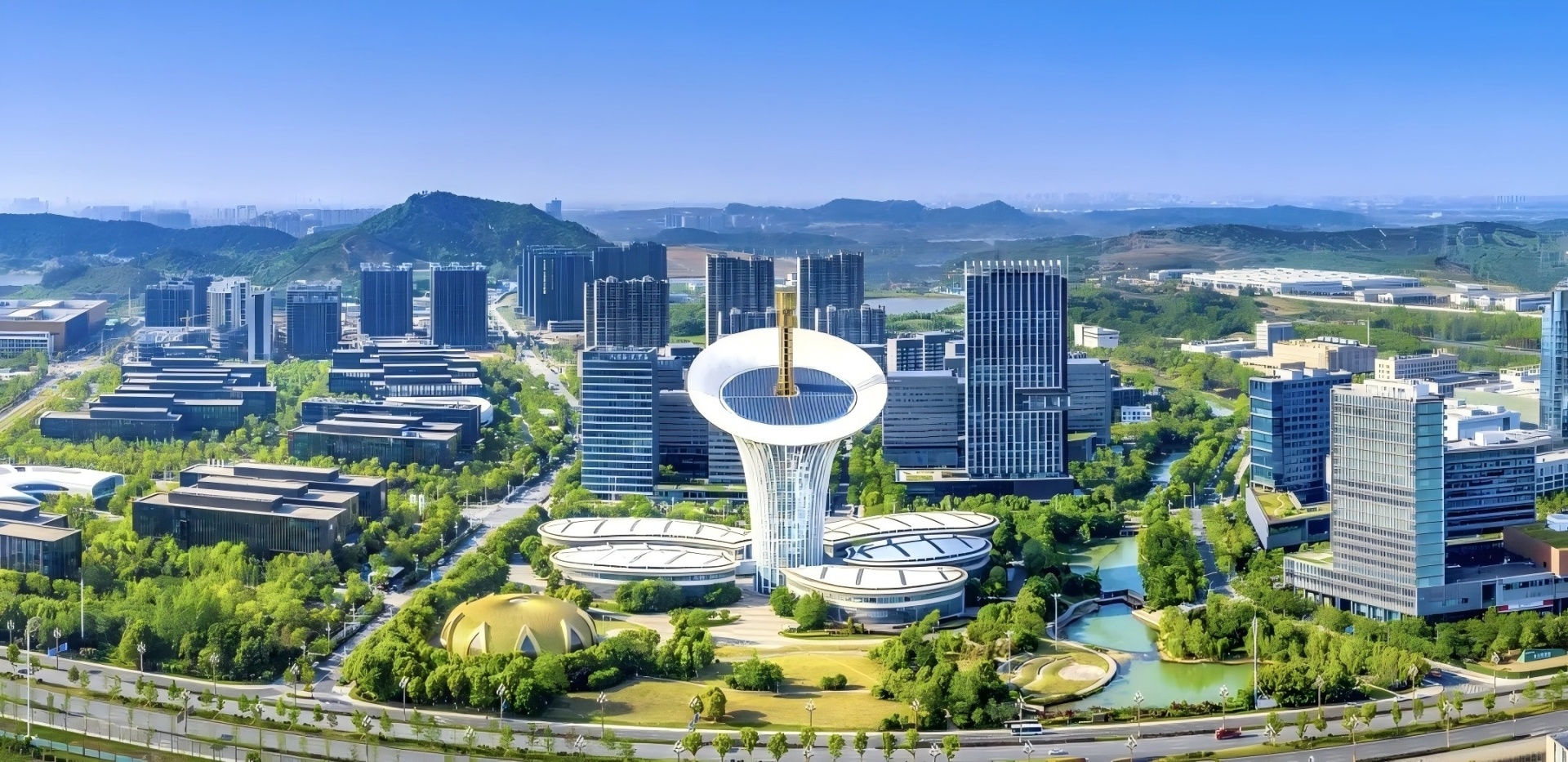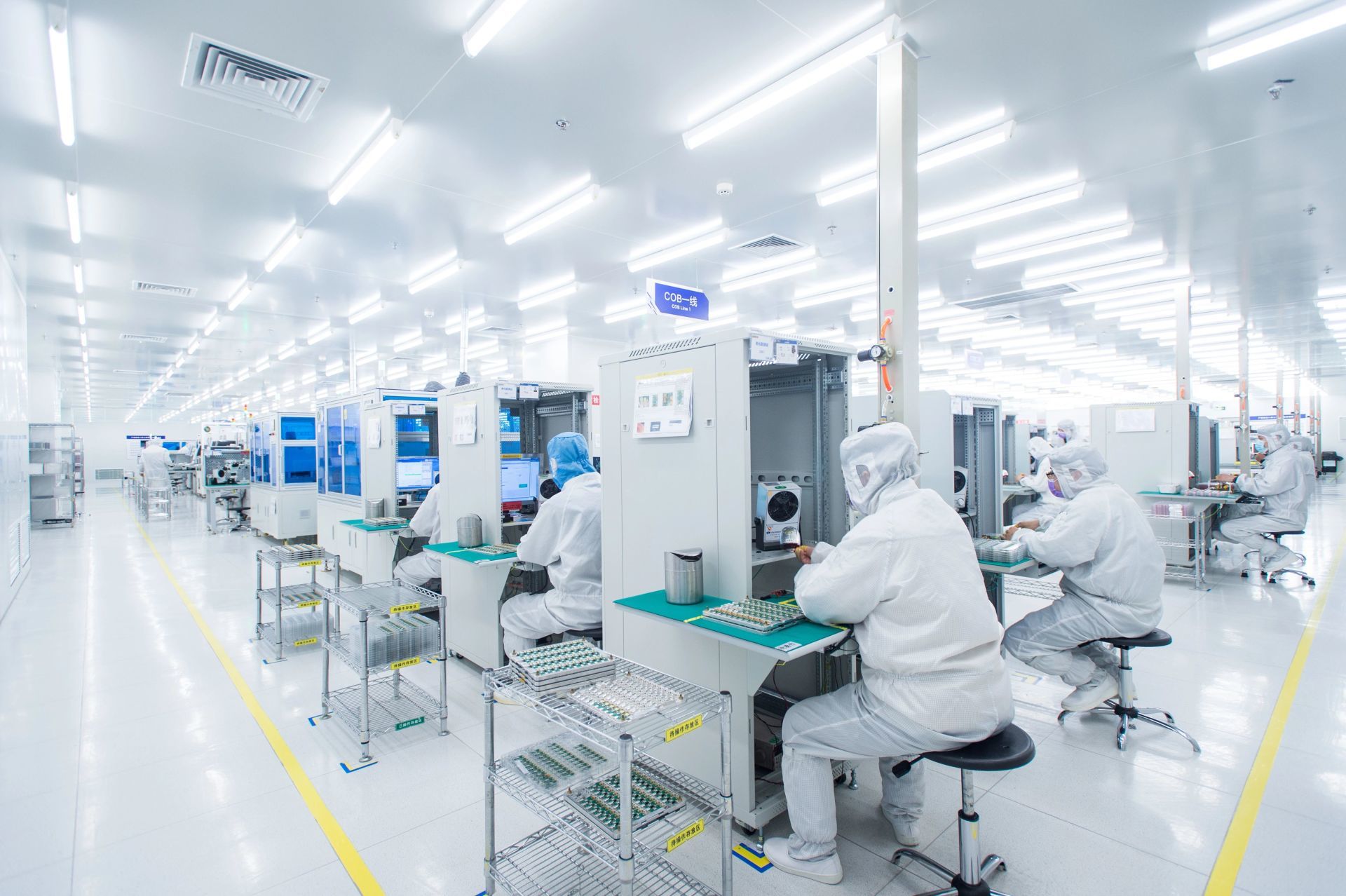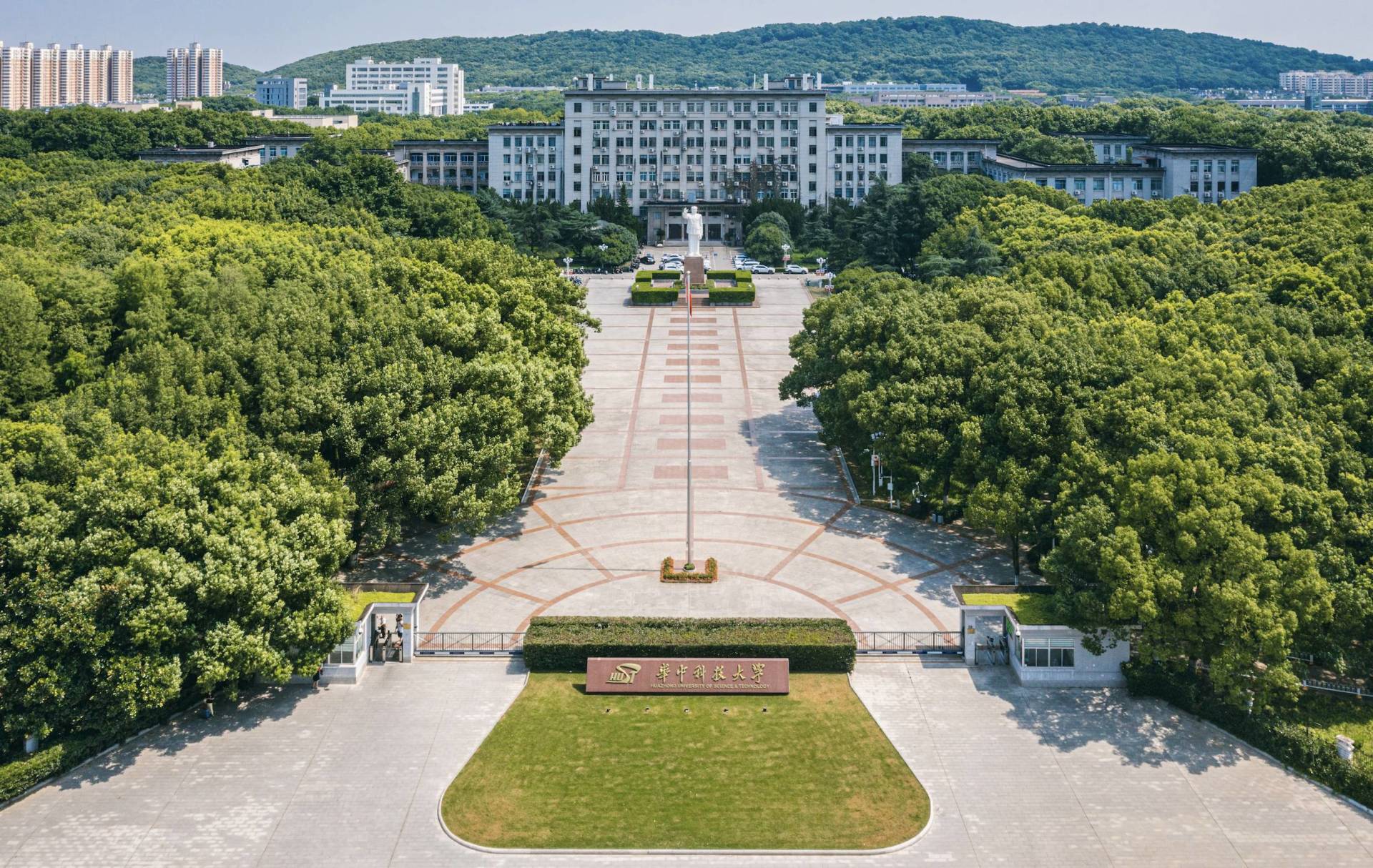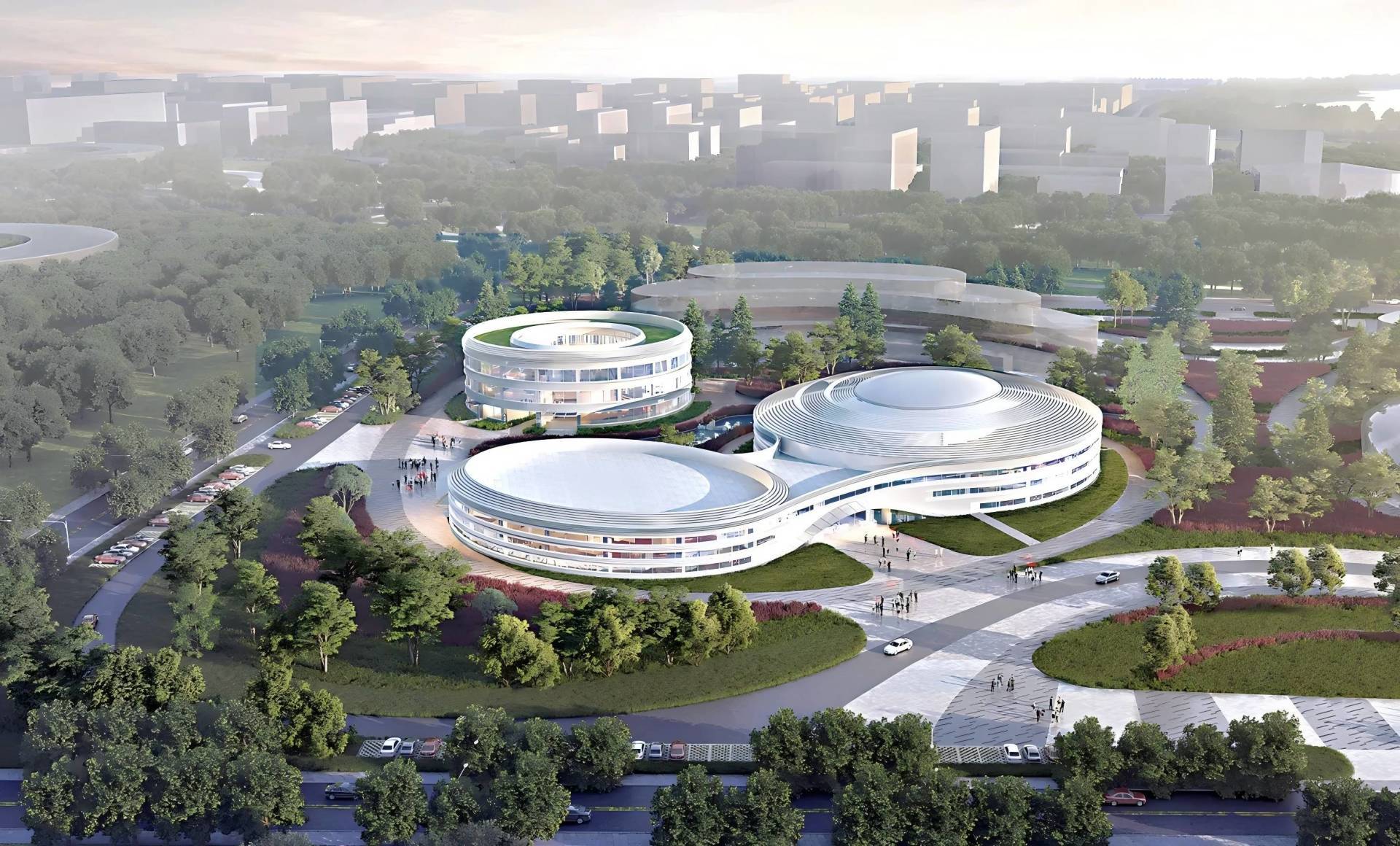Hello, welcome to Zoom Scientificinstrumentsimport/Export Hubei Co.,Ltd! Hotline:86-027-84888156
OA / Email / Download Center / 中文版

Why can Wuhan build a national science and technology innovation highland?
Time:
2024-11-14
Author:
Wang Bingqian
Source:
The Paper
Technological and industrial innovation are becoming the themes of the times.
With the in-depth development of a new round of technological revolution and industrial transformation, and as China shifts from high-speed growth to high-quality development, innovation-driven development has replaced factor-driven and investment-driven development as an important support for economic growth.
When measuring the comprehensive competitiveness of a city, it's not just about the total amount but also the structure; the "newness" of the economic industry is becoming increasingly important. This "newness" refers to both the newness of the industrial structure and the newness of technological and industrial innovation, and even more the newness of new productivity.

Wuhan Future Technology City
As a major city with national key deployments in science, education, and industry, Wuhan has actively responded to national requirements and the needs of the times in recent years. It has been making progress in promoting technological and industrial innovation, striving to create a nationally influential center for technological innovation, and better playing its role as a source of technological innovation.
Technological and industrial innovation are not only a key leap for Wuhan from factor-driven to innovation-driven development, but also a necessary choice for reshaping a new era of Wuhan above 2 trillion yuan. It is also an inescapable responsibility for a megacity to shoulder national missions and participate in international competition.
Innovation-driven development is becoming a new engine for Wuhan's economic growth.
In the first three quarters of this year, Wuhan's regional GDP reached 1,472.098 billion yuan, a year-on-year increase of 5.1%, ranking among the top among sub-provincial cities.
Currently, the international environment is becoming increasingly severe and complex, domestic effective demand is insufficient, risks and hidden dangers in key areas remain relatively high, competition between emerging and traditional industries is becoming increasingly fierce, economic operations are becoming diversified, and some areas are facing significant pressure to stabilize growth.
As a major economic city with a GDP exceeding 2 trillion yuan, Wuhan's economy has been steadily progressing in recent years. It has not only withstood the challenges brought by the slowdown of traditional driving forces but also improved its quality, and the "newness" of its economy has continuously improved, generating stronger growth momentum.
Behind this is the result of Wuhan's vigorous promotion of the integration of technological and industrial innovation, as well as its continued efforts to "transform its advantages in science, education, and talent into advantages in innovative development".

Production scene of Guoxun Technology
This change is reflected in both the industrial structure and the changes in the investment structure.
From an industrial perspective, Wuhan's fastest-growing sector this year is industry, with the largest contribution coming from high-tech manufacturing.
Data shows that in the first three quarters, the added value of industrial enterprises above designated size in Wuhan increased by 6.5% year-on-year, while the added value of high-tech manufacturing increased by 30.6%, 24.1 percentage points faster than that of industrial enterprises above designated size in the city.
The high growth of high-tech manufacturing often reflects the continuous efforts of industrial transformation and upgrading, and is also a sign of steady and positive development in the real economy. Since the beginning of this year, the double-digit growth of major industrial products in Wuhan, such as smartphones, new energy vehicles, lithium-ion batteries, tablet computers, and integrated circuit wafers, is a reflection of this trend.
These industrial products almost all fall under Wuhan's five key advantageous industries: optoelectronics information, new energy and intelligent connected vehicles, life health, high-end equipment manufacturing, and Beidou. These industries have a scale of over 1.6 trillion yuan, accounting for half of Wuhan's industrial output. The rapid growth of these industries will inevitably drive the rapid growth of Wuhan's overall industry.
From an investment perspective, due to changes in the overall environment, real estate development investment across the country has generally slowed down, and Wuhan is no exception. However, the upward trend of manufacturing investment has effectively offset the pressure brought about by the major changes in the real estate sector. In the first three quarters, Wuhan's manufacturing investment increased by 17.4% year-on-year, with investment in high-tech manufacturing increasing by 22.2%.
In the past, when real estate and infrastructure construction were booming, it was not difficult to increase investment scale. However, as the prevention and control of local government debt risks has become a top-down hard constraint, and promoting effective investment has become a new macroeconomic policy orientation, the structure and quality of investment will determine the future development space.
Investment in manufacturing, especially high-tech manufacturing, is the main body of effective investment. This includes the high-end, intelligent, green, and integrated upgrading of traditional industries guided by new industrialization, as well as the continuous implementation of strategic emerging industries and future industries guided by new productivity.
In the just-concluded third quarter, a total of 261 projects were started in Wuhan, with a total investment of 198.87 billion yuan, and industrial projects accounted for more than half, involving fields such as network security, aerospace, artificial intelligence, and new energy, reflecting a clear orientation towards industrial transformation and upgrading.
According to the plan at the beginning of the year, Wuhan included the launch of 300 industrial projects with over 10 billion yuan in investment and 50 major industrial projects with over 1 billion yuan in investment in its "annual goals". Huaxing Optoelectronics The sixth-generation OLED expansion project, Guoxun Technology's high-end optoelectronic device industrial base, and the ZF Automotive Systems project, among many other emerging industrial projects, have already landed.
Investment is the forerunner of industry and also the process of enterprises "voting with their feet".
A project usually takes one to two years from construction to completion to generating output value. Effective investment can directly boost economic growth in the current period, while high investment this year will transform into new industrial growth space in the future. The layout of future-oriented new productivity will also have a positive effect on promoting industrial transformation and upgrading and leading high-quality development.
Compared to the projects themselves, countless enterprises have settled in Wuhan, from Fortune 500 companies to leading domestic companies and local technology companies. Even first-tier cities such as Shanghai have flocked to Wuhan to attract investment and talent, valuing Wuhan's comprehensive advantages and development potential as a national center for technological innovation, and also seeing the possibility of a megacity making further progress through technological innovation.
With the continuous implementation of projects worth billions or even tens of billions of yuan, and with the aggregation of emerging and future industries, Wuhan is expected to maintain a high economic growth rate and achieve higher-quality development.
What advantages does Wuhan have in building a nationally influential center for technological innovation?
As a leading city in education and industry, Wuhan is known for its "outstanding advantages in science, education, and talent, and its strong technological innovation capabilities." It has been making continuous breakthroughs in a series of key areas related to technological self-reliance and self-strengthening, and it has a key place in disruptive innovation, technological innovation, and industrial innovation.
In June this year, the 2023 National Science and Technology Awards were officially presented. This is the second time that China has presented the highest national science and technology awards since 2020. Hubei led or hosted a total of 19 projects, doubling compared to the previous session, exceeding the total number of Guangdong, Shanghai, Jiangsu, and other provinces, ranking second nationwide. The highest national science and technology award was also awarded to Academician Li Deren of Wuhan University.
Most of these awards come from Wuhan and cover all aspects from basic research to technological and industrial innovation. They involve advantageous leading industries such as optoelectronics, new displays, Beidou, and new energy storage, and have created a new situation of vibrant development among universities, research institutes, and high-tech enterprises.

Huazhong University of Science and Technology
Generally speaking, universities and research institutions excel in basic research and technological innovation, while state-owned enterprises focus on "major national projects," and private enterprises focus more on industrial innovation and business model innovation. However, in Wuhan, cross-field collaborative innovation among different innovation entities has become a trend, with technological innovation and industrial innovation accelerating deep integration, thus enabling Wuhan's position in the national and even global technological innovation echelon to steadily rise.
Recently, the World Intellectual Property Organization ( WIPO ) released the 2024 Global Top 100 Science and Technology Clusters ranking, with Wuhan ranking 13th globally and 5th nationally, rising 30 places compared to 2018; while in the "2023 Nature Index-Research Cities" published by Nature magazine, Wuhan entered the global top ten for the first time, improving by 9 places compared to 2018.
Global science and technology clusters focus on PCT patents and scientific and technological achievements, while global research cities focus on high-quality scientific research output. Wuhan's double leap in the two major global technology rankings highlights the all-round breakthroughs in basic research, technological innovation, and industrial innovation, which is inseparable from the continuous influx of top universities, research institutions, and technology companies in Wuhan.
Wuhan is one of the cities with the most universities and research institutions in China. Currently, Wuhan has 92 universities, nearly 1.3 million college students, 155 national-level innovation platforms, 34 national key laboratories, and more than 500 city-level and above industry-university-research cooperation platforms. Whether it's the total amount of talent, talent density, or the number of major national scientific and technological innovation platforms, Wuhan is among the top echelon in the country.
The convergence of scientific and educational talents and the aggregation of innovation resources only indicate strong innovative endowments. To truly transform these resource endowments into innovative capabilities and further into a driving force for economic growth and industrial upgrading requires the collaborative efforts of technology companies and large-scale industrial clusters.
Currently, China has established a tiered cultivation path for innovative SMEs, specialized and new enterprises, specialized and new "small giant" enterprises, manufacturing "single champion" enterprises, and leading technology enterprises. Wuhan has countless representative enterprises at every link in this chain.
Data shows that Wuhan has 15,300 national high-tech enterprises, 348 specialized and new "small giant" enterprises, 22 manufacturing single champion enterprises, and 7 unicorn enterprises. These enterprises are becoming the main force in Wuhan's scientific and technological industrial innovation. In the 2023 National Science and Technology Awards, 6 specialized and new enterprises from Wuhan were included.
The emergence of leading enterprises is inseparable from the support provided by Wuhan's hundreds-of-billions-level and trillions-of-billions-level industrial clusters. Guided by new industrialization and high-quality productivity, Wuhan focuses on both the transformation and upgrading of traditional industries and the cultivation of emerging and future industries, forming a new pattern of parallel development and collaborative progress.
Hundreds-of-billions-level industries are an important indicator of a city's industrial strength. Among the top 100 cities in China, more than 60 cities have emerged with more than 100 hundreds-of-billions-level manufacturing industries. Wuhan has 5 industries moving towards the hundreds-of-billions-level, among which the three pillar industries—optoelectronic information, automobiles and auto parts, and major health—are moving towards the trillions-of-billions-level.
Compared with these industries, Wuhan has another unique near-hundreds-of-billions-level industry: the future industry. According to the plan, Wuhan is striving to create a national pilot zone for future industries, targeting 13 sub-sectors including future displays, humanoid robots, general artificial intelligence, advanced semiconductors, and new energy storage, aiming for a scale of hundreds of billions.
If the existence of traditional hundreds-of-billions-level industries such as steel and petrochemicals has laid the foundation for Wuhan's status as an old industrial city, then the rise of future industries such as optoelectronic information, new energy, and intelligent connected vehicles and even new energy storage has created greater imagination for Wuhan's goal of becoming a strong manufacturing city and a national center for scientific and technological innovation.
The deep integration of technological innovation and industrial innovation, the collaborative cooperation of universities, research institutions, and high-tech enterprises, and the rise of hundreds-of-billions-level and trillions-of-billions-level industries, coupled with the joint progress of basic innovation (from 0 to 1) and industrial innovation (from 1 to 100), together compose the strongest melody in Wuhan's efforts to build a national center for scientific and technological innovation.
"Core technological research and development breakthroughs"—Wuhan is no longer a follower, but a leader.
As a national center for scientific and technological innovation, Wuhan was initially tasked with the strategic mission of building technological innovation in cutting-edge scientific fields and emerging industries and creating a "gathering place" for global technological innovation factors, shouldering the important responsibility of promoting independent technological self-reliance and breaking through "bottleneck" restrictions in core areas.
In recent years, with the success of Shenzhou's spaceflights, Chang'e's lunar missions, Jiaolong's deep-sea exploration, the launch of aircraft carriers, the completion of the BeiDou navigation satellite system, "Sky Eye"'s space exploration, and the successful first flight of the domestically produced large aircraft, countless "modern industrial pearls" related to major national projects have been achieved by China, and behind many of these achievements, Wuhan has made significant contributions.
As an integrator of modern industry and cutting-edge technology, the breakthrough of the domestically produced large aircraft C919 is considered a representative work of the "new national system for key core technology breakthroughs." More than 200 companies from more than 20 provinces and cities across China, 36 universities, and hundreds of thousands of industrial personnel participated in the research and development.
Among them, universities and research institutions represented by Huazhong University of Science and Technology, Wuhan University of Technology, and the China Special Flight Vehicle Research Institute, and many Wuhan enterprises represented by Wuhan Hangda Aviation, Hangyu Jiatai, and Wuhan Aviation Instrument, participated in the project.
Furthermore, in the fields of integrated circuits, biomedicine, and satellite communication, where international competition and technological and industrial competition are most intense, Wuhan has achieved multiple "firsts," not only achieving independent control of domestic technologies, but many technologies have reached internationally leading levels.

Jiufengshan Laboratory's 8-inch silicon-based on-chip light source wafer
From three-dimensional flash memory chips with globally leading storage density and the first high-end wafer laser cutting equipment with 100% domestically produced core components, to the world's first clinical all-digital PET-CT and the world's first plant-derived recombinant human serum albumin product, to the world's first high-resolution radar satellite and China's first low-orbit satellite navigation enhancement system... Wuhan has made breakthroughs in numerous core technologies, vying for global influence.
With continuous breakthroughs in core technologies and increasing industrial competitiveness, Wuhan has been approved in recent years as a national aerospace industrial base, national network security talent and innovation base, national memory base, and national new energy and intelligent networked vehicle base, as well as two national advanced manufacturing industry clusters: the Wuhan optoelectronic information cluster and the "Wu Xiang Shi Sui" automobile cluster.
The continuous breakthrough in core technologies is a reflection of first-class scientific and technological innovation capabilities and is inseparable from a series of major scientific and technological measures promoted by Wuhan in recent years.
Early last year, Wuhan issued a plan, closely focusing on "national needs and Wuhan's capabilities," to advance breakthroughs in key core technologies. Following the implementation of 10 major scientific and technological projects last year using the "competition and selection" method, this year, the plan further proposes the implementation of 29 provincial "leading-edge" technology research and development projects and 23 municipal major scientific and technological projects to break through 10 key core technologies such as the intelligent networked vehicle-road collaborative computing platform.
Meanwhile, to further promote scientific and technological innovation, Wuhan is actively promoting reforms in its science and technology system. In April 2022, the Wuhan Industrial Innovation and Development Research Institute, serving as a "test field" for science and technology system reform in Wuhan, was officially launched, aiming to connect the "first kilometer" of innovation and the "last kilometer" of technological achievement transformation. In February this year, the Wuhan Municipal Bureau of Science and Technology Innovation was officially inaugurated to promote closer integration of scientific and technological innovation and industrial development, and concentrate advantageous factors and resources to drive scientific and technological and industrial innovation.
With institutional and mechanism reforms providing support, and core technology breakthroughs making waves, Wuhan has progressed from achieving domestic independent substitution to leading global scientific and technological competition, from overcoming "bottleneck" constraints to becoming a source of core technologies. Each breakthrough benefits not only Wuhan itself, but also has implications for the future pattern of major power game and technological competition.
What does it mean for Wuhan to "actively integrate into the national innovation chain"?
Among the numerous strategic positions that the nation assigns to cities, the national central city and the international science and technology innovation center are undoubtedly the two most valuable, representing both the city's status and comprehensive level, and also serving as the core force representing the nation in international competition.
If national central cities are considered the apex cities in the national urban system, then national science centers and science and technology innovation centers are the central cities in the national science and technology innovation system.
Currently, there are 9 national central cities in the country, and 8 regions have been approved to build national science centers or science and technology innovation centers. Wuhan, combining both national central city and national science and technology innovation center statuses, demonstrates a high level of urban and science and technology innovation capabilities.
As one of the nine national central cities, Wuhan, due to its "location at the crux of national strategy, undertaking national missions, leading regional development, participating in international competition, and representing the national image," has naturally become the convergence point of multiple major national strategies, including the rise of central China, the Yangtze River Economic Belt, the Belt and Road Initiative, and the construction of the national strategic hinterland.
As the fifth city approved as a national science and technology innovation center, Wuhan is aiming at the forefront of world science and technology and major national needs, actively integrating into the national innovation chain, and building an innovation growth pole and a source of technology that "supports central China, radiates nationwide, and integrates with the world".

Rendering of the Geodetic Mirror Facility project, the first major scientific instrument in Wuhan New City's Optics Valley Science Island
For Wuhan, in the "dual centers" of science and technology innovation, the laurel of the National Science and Technology Innovation Center has already been won; the only thing missing is the comprehensive national science center. Currently, only 4 places in China have been approved to build international science centers, and only Beijing, Shanghai, and the Guangdong-Hong Kong-Macao Greater Bay Area have both national science centers and science and technology innovation centers. Wuhan is a strong contender to become the next city with both "dual centers".
Unlike the National Science and Technology Innovation Center which focuses on scientific and technological industrial innovation, the National Science Center focuses more on original innovation and disruptive innovation, and is more closely related to new productive forces. It requires high-level innovation platforms as its support, such as national laboratories, national technology innovation centers, major scientific and technological infrastructure, national key laboratories, and provincial laboratories.
A few years ago, Wuhan faced the shortcoming of insufficient quantity and regional concentration of major national scientific and technological infrastructure such as large scientific instruments. However, in recent years, Wuhan, mainly focusing on the East Lake Science City and the Optics Valley Science and Technology Innovation Corridor, has successively deployed more than 10 large scientific instruments, such as the pulsed strong magnetic field and the deep earth rock and soil engineering disturbance simulation facility, achieving a breakthrough in national laboratories, and has been approved to build 21 national key laboratories and 8 Hubei provincial laboratories.
It is worth mentioning that the Central Economic Work Conference held at the end of last year emphasized "optimizing the layout of major productive forces and strengthening the construction of the national strategic hinterland." As one of the top economic, scientific and educational, and manufacturing cities in central and western China, Wuhan is likely to benefit from this.
With the successive completion of a number of high-level science and technology innovation platforms, and with the strategic support of "optimizing the layout of major productive forces," Wuhan is only one step away from becoming a national science center, and is expected to become a leader in the future, combining national central city, national science and technology innovation center, and national science center status.
A strong science and technology sector leads to a strong industrial sector, and a strong industrial sector leads to a prosperous city. By upholding the banner of scientific and technological innovation and industrial innovation, Wuhan will surely continue to break through and move upward.

